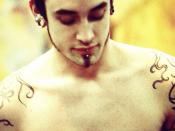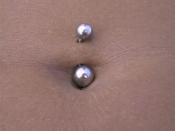Have you ever wondered why in the world there are people walking around with metal on their faces, in their mouth, and God only knows where else? The popular trend of body piercing has been around since ancient times and has many concerning issues such as infections, safety, and risks. However, numerous people still choose to put their bodies in jeopardy to be part of the latest fashion craze.
The history of body piercing varies among different societies. Some tribes used piercings as a magical purpose because they believed that metal repelled demons from getting inside the body. Sailors also had earrings because they believed it improves their eyesight. In some societies piercing the ears was a puberty ritual. Each parent would pierce one ear of their child to symbolize that the child is dependant on his parents. In other societies it was used as a status rank or passage into manhood ("Ear Piercing Aftercare" 1).
During biblical times God tells Moses: "Ye shall not make any cuttings in your flesh for the dead, nor print any marks upon you" (Lev. 19:28). Even during this time body piercing was a very controversial issue as it is today.
Throughout the Elizabethan Era, men such as Shakespeare, Sir Walter Raleigh and Francis Drake wore earrings. During this time body piercing was considered effeminate in the western society. "As the Roman Republic grew more effeminate with wealth and luxury, earrings were more popular among men than women: no less a
he-man than Julius Caesar brought back to repute and fashion the use of rings in the ears of men" ("Ear Piercing Aftercare" 1). Today, most people do not consider men who have piercings effeminate. Sports stars, singers, and other celebrities are flaunting the trend of body piercing. Not only are teens sporting them,



Well Written
I would just like to say that is a very well written essay. I am really in to body modification and that essay really explains everything very good.
2 out of 2 people found this comment useful.